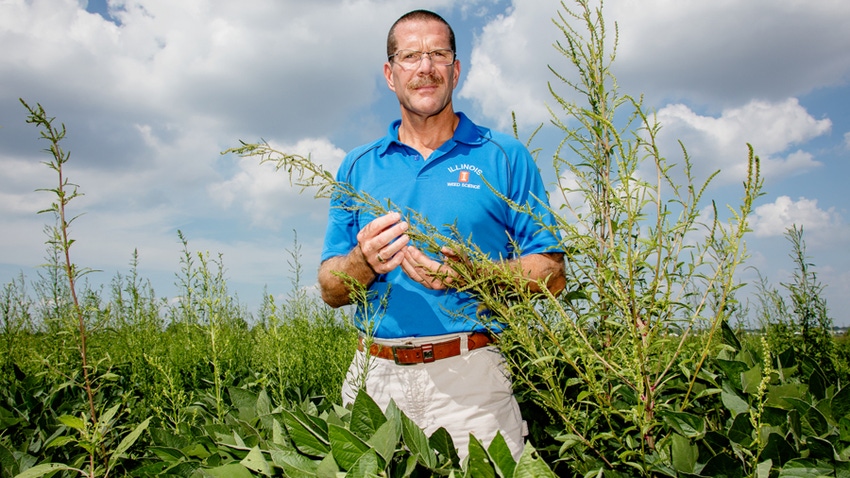May 30, 2023

Too much reliance on herbicides has led to a grim reality for weed control — one littered with unknowns as more weeds become herbicide resistant each year. Aaron Hager, University of Illinois weed scientist, reports there are 520 unique cases of herbicide resistance, involving 268 species around the world, with roughly a dozen new cases of resistance per year.
“We need to understand why these patterns develop,” Hager says. “If we don’t know what causes these new resistance mechanisms, how do we come up with a herbicide solution to fix it?”
Also, the plant science community can’t understand how plants are evolving and developing resistance as quickly as they are. The solution is complicated given that many weeds have developed metabolic or nontarget resistance, where plants rapidly break down effective herbicides.
“It’s unnerving when we move into this realm of metabolic resistance, because we have zero predictability at all,” Hager explains. “We have no idea what still works and what doesn’t work — and that’s the challenge.”
He says understanding likely will need to begin at the laboratory level, especially because the marketplace looks bleak for any incoming chemistries.
“Who’s to say companies are willing to take a $400 million risk to bring a new herbicide into the marketplace,” asks Hager, noting the speed of new resistance mechanisms. “In eight to 10 years when it comes to the marketplace, will it even be effective?”
Industry experts have debated the best course of action for managing herbicide resistance.
For years the recommendations to combat herbicide resistance included herbicide rotations within and between years to different modes of action and tank mixtures with several modes of action present. In 2015, the University of Illinois conducted a research project that discovered rotating modes of action actually resulted in increased resistance. Since then, tank mixtures have become the industry standard.
“If someone says they’re absolutely, positively sure that tank mixtures are effective against metabolic resistance, that’s just a guess,” says Hager, noting that tank mixtures only stall the evolution of resistance. “There’s no evidence to really support that.”
Hager has heard discussions asserting that it’s easier to evolve resistance to foliar-applied herbicides than soil-applied herbicides. He says that, too, is mere speculation.
“If we think we’re going to solve a problem that’s been caused by using herbicides simply by using herbicides differently, we’re fooling ourselves,” Hager says. “It’s not going to work that way.”
Weed control alternatives
The bottom line is that Hager strongly recommends growers consider additional weed control tactics in conjunction with herbicide application.
“If you’re losing the effectiveness of your weed control program because of these new mechanisms of resistance, we have to recognize that if a product worked reasonably good this year, it may or may not work next year,” Hager says.
Although there’s no single remedy, he’s seen growers have success with:
interseeding rye between soybean rows to suppress weeds
electrocuting weeds that survive over the top of soybeans
using additional tillage in areas with heavy pressure
walking fields and cutting weeds to eliminate weed seed production
“As innovative as farmers are, they’ll figure this out one way or the other,” Hager says. “They’re going to think of some other things that we haven’t even thought of yet. And we certainly encourage them to do that.”
About the Author(s)
You May Also Like






